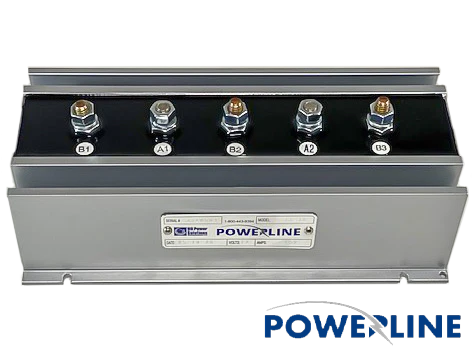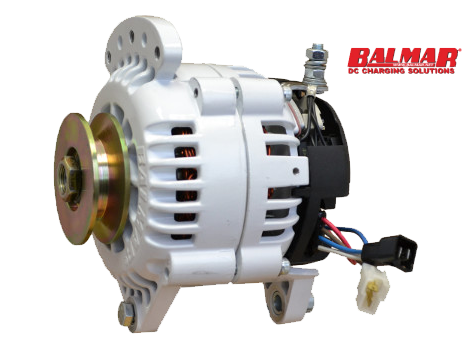An explanation of the different devices involved, plus where and how to use them.
- Battery Isolators
- DC to DC Chargers and Battery to Battery Chargers
- Battery Combiners
- High-Output Alternators for Large Lithium
Battery Isolators

Most factory-built boats use an alternator to charge the engine starting battery. If you want to charge the two banks that have the same chemistry (example: an AGM starting battery and an AGM house battery), then a BATTERY ISOLATOR will do the job nicely. The isolator should be the same size as the alternator or larger (a 130 Amp alternator with 2 battery banks would require an isolator that is for 2 banks and 130 Amps or larger). You can also get isolators for 2 or 3 battery banks.
DC to DC Chargers and Battery to Battery Chargers
If the battery banks are different chemistries (i.e. AGM and Lithium), then a DC-to-DC battery charger can be used. This is also referred to as “battery to battery.” When using a battery-to-battery charger, the alternator charges the start battery and then all remaining energy is sent to the Lithium house bank. With a standard 80 Amp alternator, you could use an 18 or 30 Amp battery-to-battery charger.
Note: each side of the charger should have circuit protection.
For more info, see our STERLING and VICTRON battery-to-battery options.
Battery Combiners
BATTERY COMBINERS can be used to send extra charging energy to a different bank that is of the same chemistry. An example would be from the start battery to a house bank of the same chemistry. With a combiner, we can also charge banks with different voltages. For instance, we might charge 12 VDC to 12 VDC, 12 VDC to 24 VDC, or 12 VDC to 36 VDC.
High-Output Alternators for Large Lithium
Most marine engines come with a smaller alternator to charge the starting battery. Normally, when you see an alternator with a single V belt, you know that it is a 50 to 100 Amp alternator. To use a larger alternator, you will need a dual V or serpentine belt. When using these belt kits, we are now able to use HIGH-OUTPUT ALTERNATORS as large as 170 or even 250 Amps. With this much energy production, we can now charge a much larger house battery bank. This is a perfect fit for a large Lithium house bank.

With this in mind, there are a few more items to consider when charging Lithium batteries with an alternator. It is important to include a programmable external regulator and a temperature sensor hooked up to the alternator. We now have all the charging from all sources going the large house Lithium bank, this may also include energy from solar and wind energy. So how do we charge the starting AGM battery bank? The battery-to-battery charger is a great fit.
Jim is a veteran advisor of eMarine Systems' technical sales team, known for his consistently positive outcomes. With a versatile skillset and extensive marine expertise, he has successfully contributed to a wide range of projects. These projects include customizing various vessels for renewable energy applications and conducting complete conversions of RVs to support extended off-grid living.